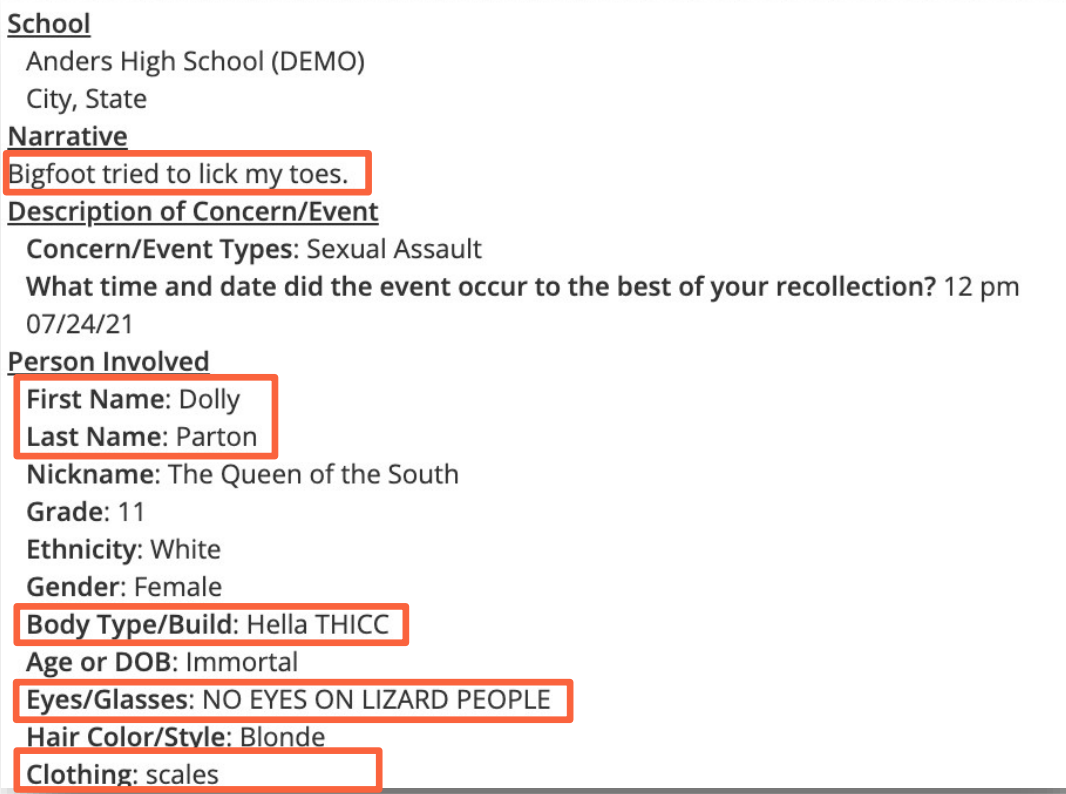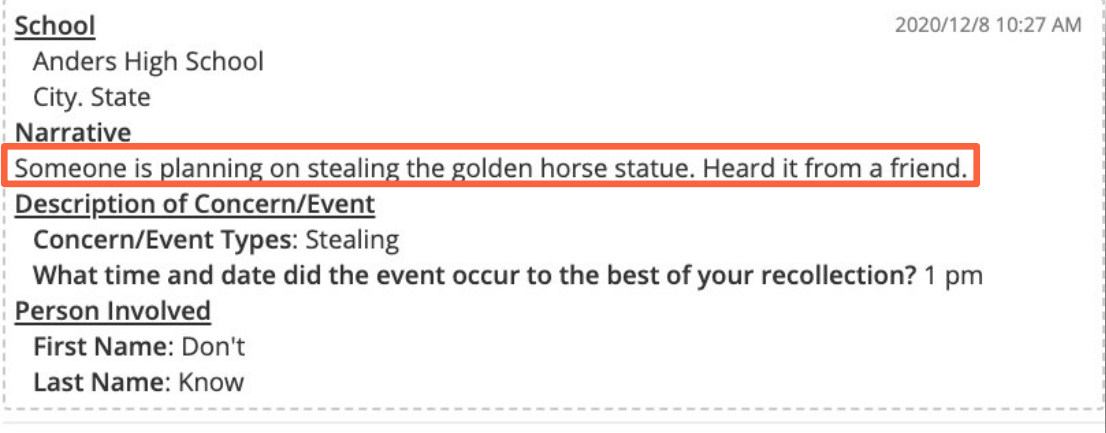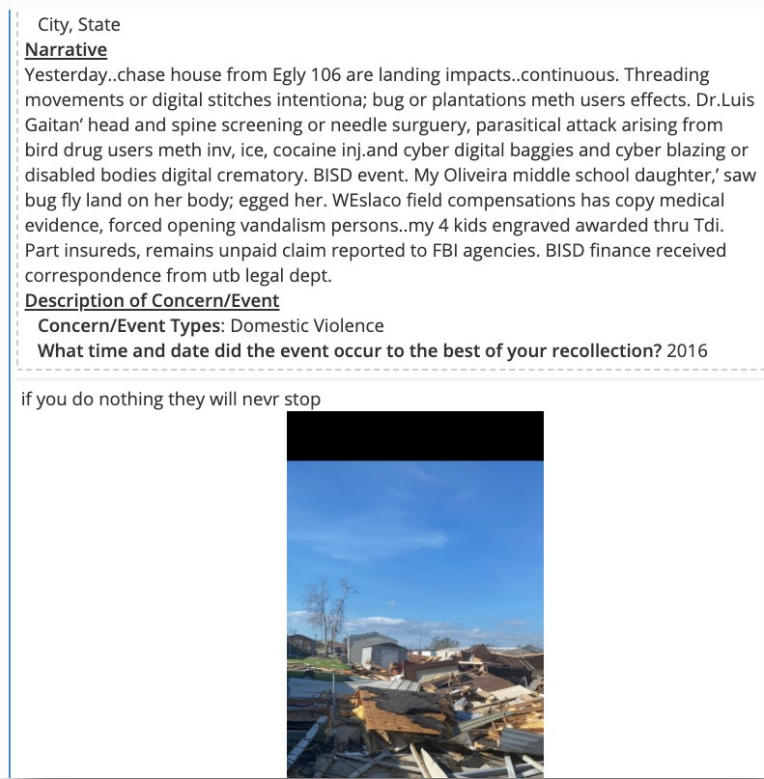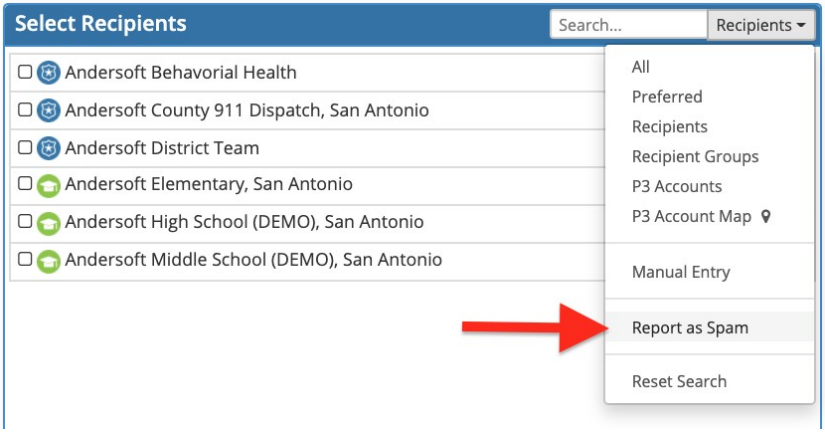Handling Tips- P3
Learn tricks and techniques for efficiently managing and organizing your workflow.
- Emergency Management
- Connect360
- PBIS Rewards
- Hall Pass
- Preparation & Response Training
- Behavioral Case Manager
- Visitor Management
-
Compass
Getting Started Webinar Links Data & User Management Compass Curriculum for Students, Staff, & Families Compass Behavior Intervention Compass Mental Health + Prevention Compass for Florida - Character Ed, Resiliency, & Prevention Compass for Texas - Character Ed Analytics & Reporting Release Notes & Updates Additional Resources
- School Check In
- ALICE Training Institute
- Detect
- Anonymous Tip Reporting
- Resources
- Back-to-School
Prank Tips
Tip Managers will commonly run into Prank Tips where the Tipster sends in information that is clearly not factual with silly or vague language.
How to identify a Prank Tip:
- Tip Narrative includes silly language.
- Persons Involved includes famous or fictitious names.
- Tip content is irrelevant.
- There is clearly no need for
action.

“I’ve received a Prank Tip, what do I do?”
- Select the bogus/prank tip canned response and send.

- Stop the two-way dialogue if necessary.

- Change the event type to “Bogus/Prank”.
- In the “Actions Taken/Outcomes” section of the “Disposition Tab”, select “Prank/Spam Tip”.
| If you want to block a Tipster completely, see the Spam Tips Resource for instructions |
Unfounded Tips
Tip Managers will commonly run into Unfounded Tips where the Tipster offers information in good faith but it does not lead to anything actionable.
How to identify an Unfounded Tip:
- Tip Narrative includes relevant information to your school.
- Tip Narrative offers information that it appears actionable.
- Upon investigating, the Tip Manager has determined that the tip does not require any action.

“I’ve received an Unfounded Tip, what do I do?”
- Investigate the tip.
- Make notes of your investigation in the Team Communication section (Main Tab).

- In the “Actions Taken/Outcomes” section of the “Disposition Tab”, select “Unfounded”.
Spam Tips
Tip Managers may receive tips that contain words that seem relevant but the syntax is unnatural and unorganized.
How to identify a Spam Tip:
- Tip Narrative includes terms that would typically require action to be taken.
- Tip Narrative does not contextually make sense.
- Tip Narrative is gibberish.

“I’ve received a Spam Tip, what do I do?”
- Deliver the tip to the Spam Blocker Account.
- Change the Event Type to “Spam Tip”.
- In the “Actions Taken/Outcomes” section of the “Disposition Tab”, select “Prank/Spam Tip”.
